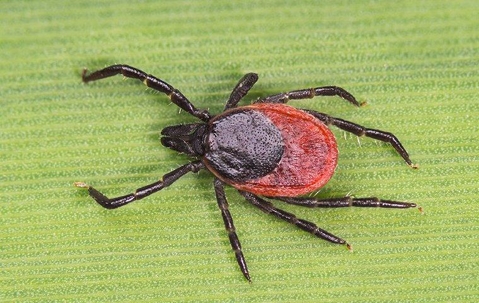Ticks and Lyme disease are inextricably linked. But don’t blame the tick for causing this debilitating, chronic disease.
Other animals, specifically mice, chipmunks, and shrews, are the actual source of Lyme disease. Ticks – deer ticks in particular – are just the vectors of Lyme disease.
Called reservoirs, many rodents carry Borrelia burgdorferi, the bacteria that causes Lyme disease. When a deer tick bites an animal that carries the bacteria, the tick doesn’t get sick, but it can pass the bacteria on to a human. The tick essentially serves as a go-between or a vector.
What Are Deer Ticks?
Deer ticks are a small, rust-brown arachnid that lives in many places in Texas. Because deer ticks’ legs are black, deer ticks are sometimes called “black-legged ticks.” They’re small, usually between 0.14 to 0.2 of an inch. When bloated with blood after feeding, deer ticks can double in size.
Grassy pastures and humid forested areas are deer ticks’ preferred habitats. If there’s plenty of wildlife around, ticks are even happier. These factors make San Antonio the perfect environment for these arachnids to thrive.
How Do Deer Ticks Find Hosts?
Ticks can’t fly or jump. Instead, they must wait for a host to happen by. Ticks wait on the ends of grasses or bushes in a position called “questing.” They hold the grass with their lower legs and reach out with their upper legs in the hopes of climbing onto a host. When a person or animal brushes the grass, the tick quickly crawls onto the body and seeks out a place to bite.
Ticks like to bite humans in places where they can’t be easily seen. They prefer warm, moist areas like the groin, armpits, or hair. The tick cuts through your skin and inserts a feeding tube which has barbs to keep the tick in place. If you don’t notice the tick, it will feed for a few hours or even a few days.
Will Ticks Give Me Lyme Disease?
Deer ticks in San Antonio can give you Lyme disease. In most cases, a tick must be attached to your body for 36-48 hours to transmit the bacteria. According to the Centers for Disease Control and Prevention, most humans who get Lyme disease are bitten by immature ticks called nymphs. At less than 2 millimeters, nymphs are much harder to spot on your skin. Since adult ticks are larger, you’re much more likely to spot it and remove it before the bacteria is transmitted.
Most deer tick bites result in mild irritation and redness at the site. If a tick-borne disease has been transmitted, you might notice:
- A red spot or rash near the bite site
- A full-body rash
- A stiff neck and/or headache
- Nausea
- Weakness and muscles pain
- Fever and chills
If you’re concerned about your symptoms, consult a healthcare professional as soon as possible. People who take antibiotics in the early stages of Lyme disease can experience a complete recovery.
Prevent Tick Bites In San Antonio
To decrease tick activity in San Antonio, address the following issues:
- Manage Wildlife: Use fencing to keep wildlife from entering your property. Remove clutter to eliminate animal hiding places in your yard. Move bird feeders and baths at least 20 feet from your home.
- Eliminate Rodents: Seal gaps in your home and remove piles of wood and thick underbrush to prevent rats and mice. Make sure weatherstripping is in place to keep mice out of your home.
- Protect Pets: Treat your pets with preventatives to prevent ticks in San Antonio. Your veterinarian can recommend effective treatments. You should also inspect your pets after they’ve spent time outdoors. Be sure to check for ticks between their toes and in the ears.
- Prevent Bites: Use insect repellent when you spend time outside. If possible, avoid tall grasses and wooded areas. If not, wear long pants and consider tucking your pant legs into your socks.
If you need assistance in tick control in San Antonio, don’t hesitate to reach out to White Knight Pest Control. Our treatment options can significantly reduce vector-borne diseases. Reach out today to schedule service.

